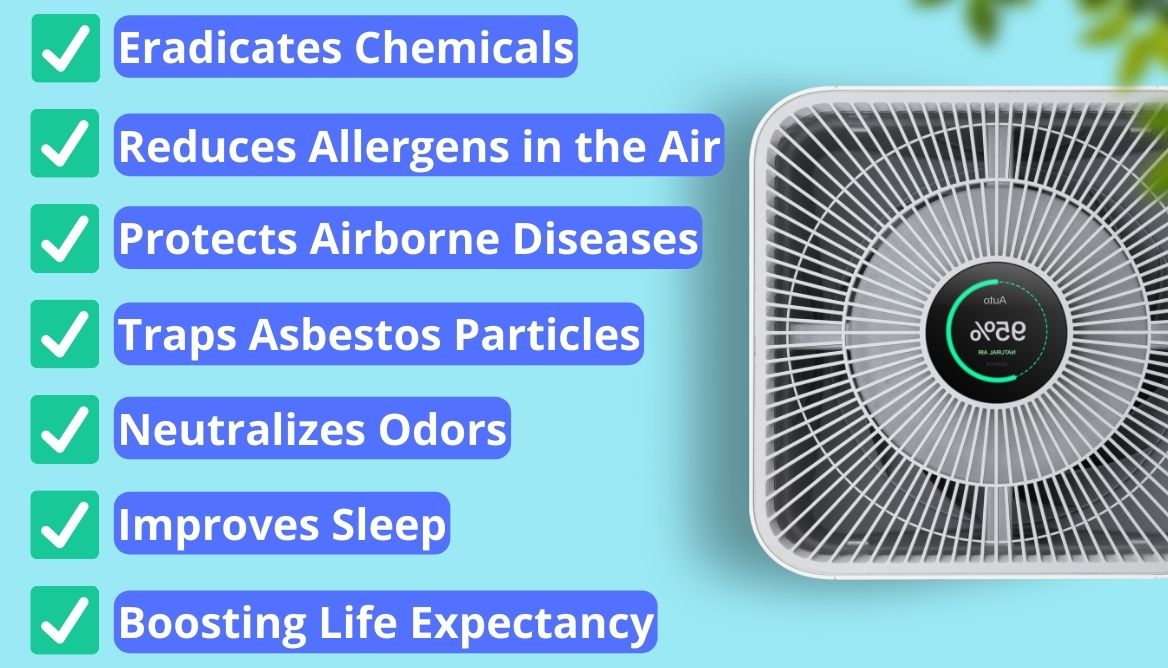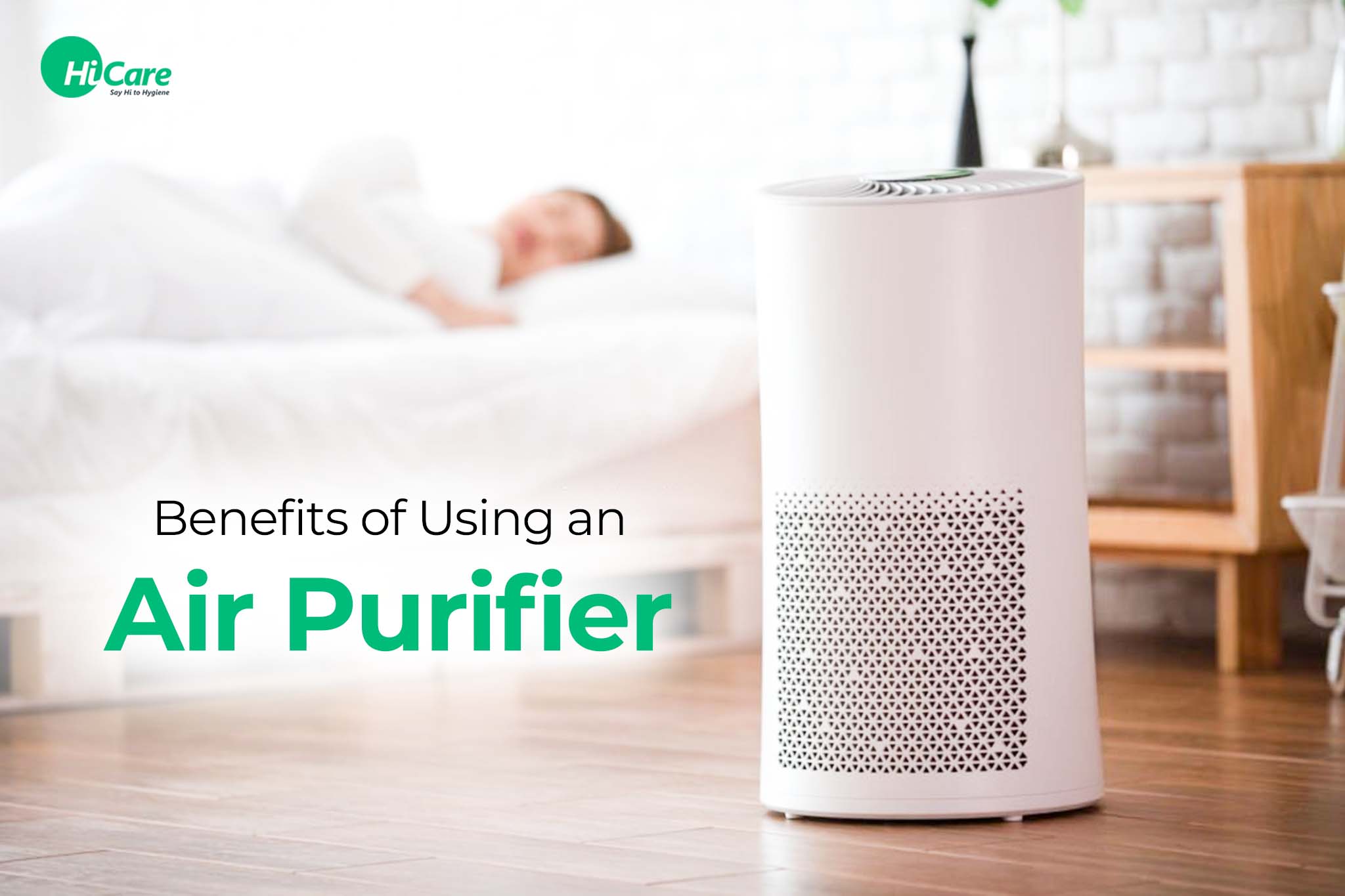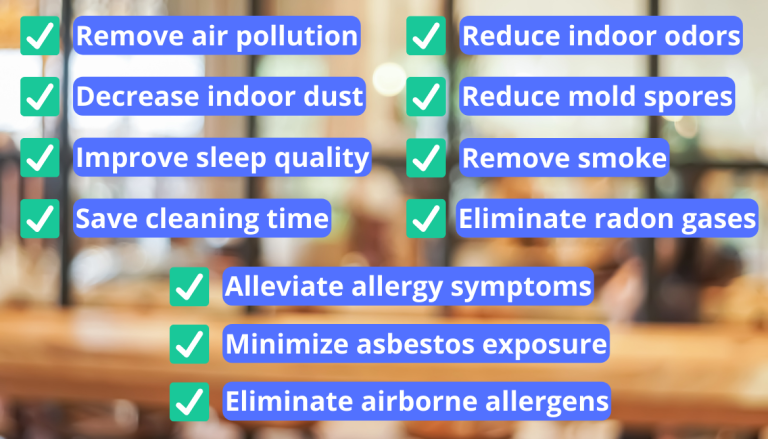What Are The Benefits Of An Air Purifier

Frequently Asked Questions About Air Purifiers
Are you considering an air purifier for your home or office? You're not alone! Many people are recognizing the importance of clean indoor air. This FAQ addresses common questions to help you understand the benefits of using an air purifier.
1. What exactly does an air purifier do?
An air purifier cleans the air inside your home or office by removing pollutants. Think of it as an air filter for your entire room. It draws in air, filters out unwanted particles, and then releases cleaner air back into the space. This helps improve the overall air quality.
2. What kinds of pollutants do air purifiers remove?
Air purifiers can target a wide range of airborne pollutants, including:
- Dust: Everyday dust particles that settle on surfaces.
- Pollen: A major allergen, especially during spring and fall.
- Pet Dander: Tiny skin flakes shed by pets, a common allergen.
- Smoke: From cooking, wildfires, or tobacco.
- Mold Spores: Can trigger allergies and respiratory problems.
- Dust Mites: Microscopic creatures that live in bedding and upholstery.
- Volatile Organic Compounds (VOCs): Gases released from cleaning products, paints, and other household items.
- Some Bacteria and Viruses: Certain air purifiers, particularly those with HEPA filters, can capture airborne bacteria and viruses. However, they should not be considered a replacement for other preventative measures like vaccination and hand washing.
The specific types of pollutants an air purifier removes depend on the type of filter it uses. HEPA filters are particularly effective at capturing small particles, while activated carbon filters are better at removing odors and gases.
3. Who can benefit most from using an air purifier?
While anyone can benefit from cleaner air, certain individuals may experience more noticeable improvements in their health and well-being. These include:
- Allergy Sufferers: Air purifiers can significantly reduce allergy symptoms by removing pollen, dust mites, and pet dander from the air.
- Asthma Sufferers: Cleaner air can help reduce asthma triggers and improve breathing.
- People with Respiratory Issues: Air purifiers can alleviate symptoms of other respiratory conditions by removing irritants from the air.
- Smokers (and those living with smokers): Air purifiers can help remove smoke particles and odors from the air.
- Pet Owners: Air purifiers help control pet dander and odors.
- Residents of High-Pollution Areas: Those living near industrial areas or busy roadways can benefit from removing outdoor pollutants that enter the home.
- People Sensitive to Odors and Chemicals: Air purifiers with activated carbon filters can help remove VOCs and other odor-causing substances.
- Families with Young Children: Children are more susceptible to the effects of air pollution, so cleaner air can be especially beneficial for them.
4. What are the specific health benefits of using an air purifier?
The benefits of cleaner air can translate into several positive health outcomes:
- Reduced Allergy Symptoms: Less sneezing, coughing, runny nose, and itchy eyes.
- Improved Asthma Control: Fewer asthma attacks and reduced reliance on medication.
- Better Sleep: Cleaner air can lead to more restful sleep by reducing nasal congestion and other respiratory discomforts.
- Reduced Risk of Respiratory Infections: By removing some airborne bacteria and viruses, air purifiers may help reduce the risk of colds, flu, and other respiratory infections.
- Improved Cardiovascular Health: Studies have shown that exposure to air pollution can increase the risk of heart disease. Air purifiers can help reduce this risk.
- Reduced Exposure to Harmful Chemicals: Air purifiers with activated carbon filters can remove VOCs and other harmful chemicals from the air.
- Overall Improved Well-being: Many people report feeling more energetic and alert when breathing cleaner air.
It's important to remember that air purifiers are not a cure-all for health problems. However, they can be a valuable tool for improving indoor air quality and promoting better health.
5. Are air purifiers noisy or expensive to run?
The noise level and operating cost of an air purifier can vary depending on the model.
Noise: Most modern air purifiers are designed to operate quietly, especially on their lower settings. Look for models with a decibel (dB) rating of 50 dB or less for quiet operation. Some even have a "sleep mode" that reduces the fan speed and noise level.
Operating Cost: The operating cost depends on the energy consumption of the air purifier and your electricity rates. Look for Energy Star certified models, which are more energy-efficient. The cost of replacing filters also needs to be factored into the overall operating expense. Filters typically need to be replaced every 3-6 months, depending on the type of filter and the air quality in your home.
Before purchasing, check the manufacturer's specifications for noise levels and energy consumption. Reading online reviews can also provide valuable insights into the real-world performance of different models.
6. What size air purifier do I need for my room or office?
The size of the air purifier you need depends on the size of the room you want to purify. Air purifiers are typically rated by their Clean Air Delivery Rate (CADR), which measures the volume of clean air the unit can produce per hour. A higher CADR indicates that the air purifier can clean a larger room more quickly.
Here's a general guideline for choosing the right size air purifier:
- Small Rooms (up to 250 square feet): Look for an air purifier with a CADR of at least 150.
- Medium Rooms (250-500 square feet): Look for an air purifier with a CADR of at least 250.
- Large Rooms (500+ square feet): Look for an air purifier with a CADR of at least 350 or more. For very large rooms, you may need multiple air purifiers.
It's always better to choose an air purifier that is slightly larger than you need. This will ensure that it can effectively clean the air in your room, even when the air is heavily polluted. Consider the height of your ceilings as well, as higher ceilings require a higher CADR.
7. Are there any drawbacks to using an air purifier?
While air purifiers offer numerous benefits, there are a few potential drawbacks to consider:
- Cost: Air purifiers can be a significant upfront investment, and the cost of replacement filters can add up over time.
- Maintenance: Air purifiers require regular maintenance, including replacing filters and cleaning the unit.
- Noise: Some air purifiers can be noisy, especially on their higher settings.
- Ozone Production: Some older or less reputable air purifiers may produce ozone, a gas that can be harmful to your health. Look for air purifiers that are certified by the California Air Resources Board (CARB), which have been tested and found to meet strict ozone emission standards. Avoid air purifiers that use ozone generators as their primary cleaning method.
- Not a Substitute for Other Measures: Air purifiers are not a substitute for proper ventilation, cleaning, and other measures to improve indoor air quality. It's important to address the source of pollution whenever possible. For example, if you have a mold problem, you need to address the moisture issue that is causing the mold growth.
By weighing the potential benefits and drawbacks, you can decide whether an air purifier is the right choice for you. Carefully consider your specific needs and concerns when choosing a model.
In conclusion, air purifiers offer a valuable way to improve indoor air quality and promote better health. By understanding the benefits and limitations, you can make an informed decision about whether an air purifier is right for you and choose a model that meets your specific needs.









